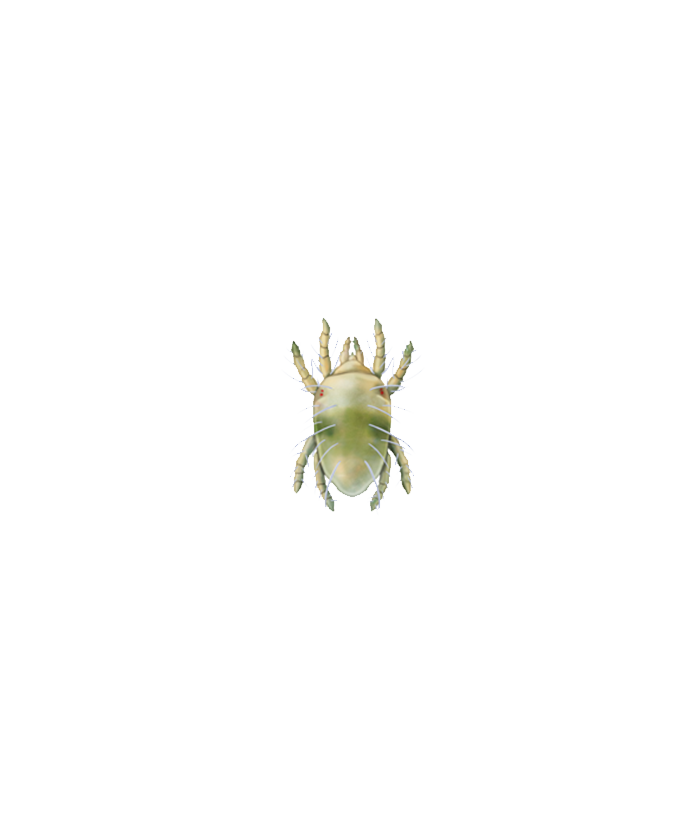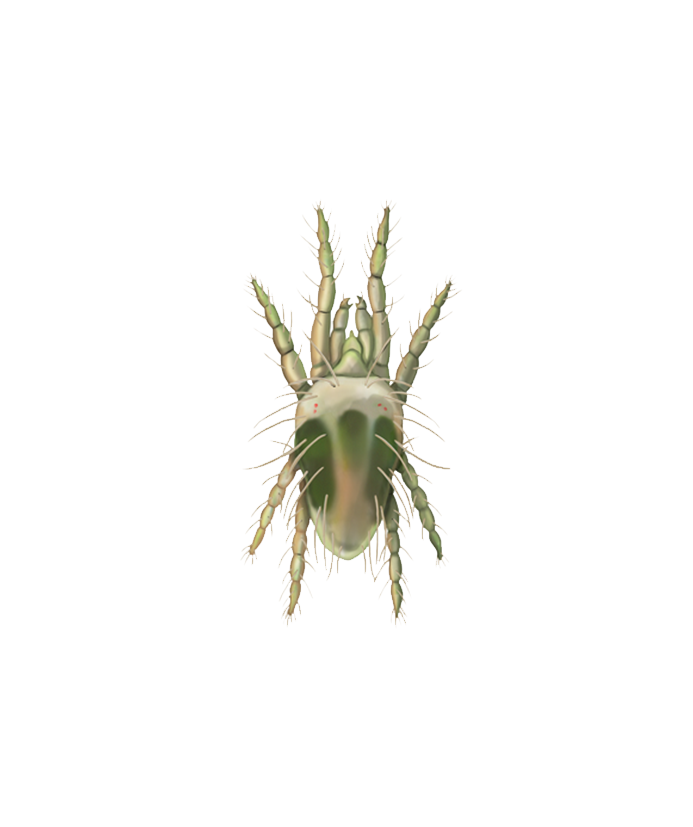General
Two-spotted spider mite (Tetranychus urticae) is a pest of many crops throughout the world. Despite their small size, they are capable of very rapidly doing severe damage, due to their great reproductive capacity. There are more than 1200 species worldwide and many of them are major crop pests. The two-spotted spider mite (Tetranychus urticae) is by far the most important species in greenhouses and many outdoor crops.
Life cycle and appearance of Spider mite
Two-spotted spider mites (Tetranychus urticae) pass through the following developmental stages: egg, larva, protonymph, deutonymph, and adult. In the larval and nymphal stages, an active period and a resting period of roughly equal duration can be distinguished. Eggs are usually found on the underside of leaves. They have an oval body that is rounded at the rear end. Their colour can vary from orange, light yellow or light green to dark green, red, brown, or almost black.
Damage symptoms
Larvae, nymphs and adults cause damage to the host plant by feeding on plant sap. They mainly occur on the underside of leaves where they pierce the cells and suck out the contents. The empty dead cells become yellow, and in many plants the damage can also be seen on the upper surface of leaves as small yellow dots. The destruction of cells results in reduced photosynthesis, increased transpiration and reduced plant growth. As damage increases, whole leaves turn yellow, and as more cell sap is removed, the leaf, and eventually the whole plant, may die. In tomatoes and cucumbers, as little as 30% damage of the leaf surface can lead to loss of the crop. The nymphs and adults also produce webs, and plants can get completely covered with such webs in which the mites live. The webbing and spotting on the leaves affects the appearance of the crop. This is of particular concern in ornamental crops.






